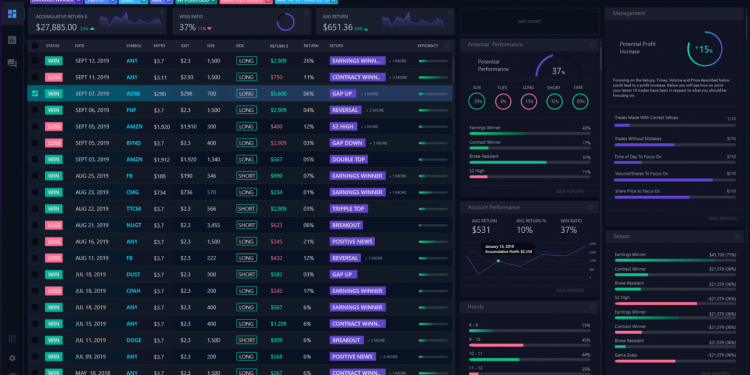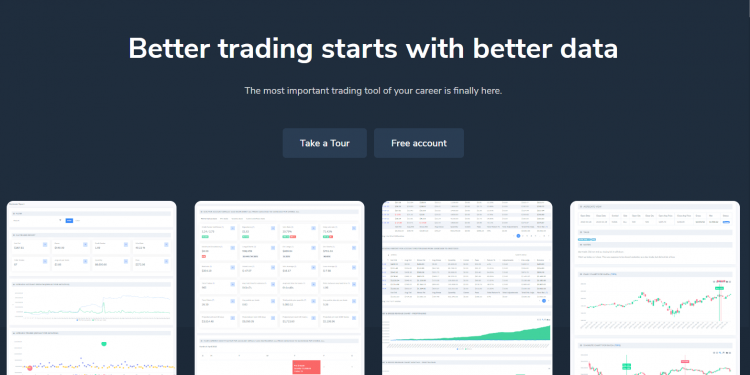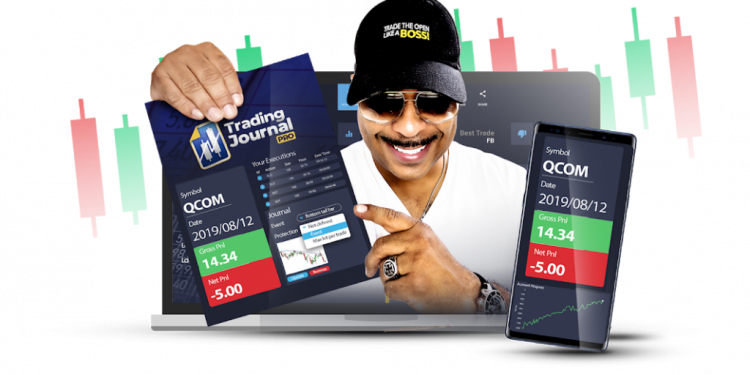Advertisement
A series of results will show if we search “how to become a successful trader?” on Google. However, the most optimal and simplest tip is to use the Trading Journal – a discipline-based tip that separates emotions from money and truly reflects your trading performance.
What is a Trading Journal?
Simply put, a Trading Journal is a record of your trades as a trader, as well as a summary of the trading process and performance.

However, don’t confuse the Trading Journal with a report from a brokerage account because the utility of using the Trading Journal is much more than that. It includes ways of developing strategies, managing risks, psychology,…
How to create a Trading Journal
Any paper or mobile app that you can fill out the details mentioned above can be your trading log. Trading Journals can be an Excel table or Google worksheet simply because they can be easily accessed and edited. Calculations can be automated on Excel, saving you time while trading
In addition, to make logs more efficient, you can take screenshots of annotated trading charts and attach them to the corresponding transaction on the worksheet.

See also: What Is DEX – An Important Role In The Crypto Economy?
Benefits of using trading journals
Assess your weaknesses and strengths
For beginner traders, there is often no round of testing or mock simulations to observe and evaluate how valuable their trades are in the market. So, Trading Journal is the best way for them to evaluate trading activity and identify their strengths and weaknesses.
By observing the Trading Journal objectively, they can make simple assessments of the trading performance that can be made.
Performance quantification
Having a Trading Journal will make things look clearer and most importantly, it’s represented by numbers. This helps traders evaluate their trading performance, rethink their strategies, and change the trading setup in the coming sessions.
In short – measurable goals are achievable goals.
Recognize behavioral patterns
Traders can reflect on their trades and identify patterns that they may be developing subconsciously. Trading patterns based on profitable emotions or behaviors, can completely become a deterrent if not recognized during trading. Why is that?
This is because behavior-oriented trading patterns rarely have an upper limit that makes traders more likely to get carried away. Therefore, relying on trading journals and identifying patterns will allow traders to have their strategies based on performance rather than emotions or behavior.
Build consistency in strategy
This is the cumulative benefit of the previous two points. Once trading performance is quantified and separated from emotions, trades are completely driven by strategies supported by numbers. This makes the trade repeatable and with full practice, it will develop into consistency in the trading.
Consistency in trading strategies helps traders maintain collection even in bear markets and other uncertain market conditions. Without consistent strategies, uncertain times can leave traders with a trick because market uncertainty often drives emotional trades.
Avoid hasty trading
Similar to previous benefits, having a Trading Journal will limit traders from overworking when making money in the market. This usually happens when a plan with a stable profit becomes unusual and results in transactions being executed in a jerky way.
This jerky reaction often does more harm than good, as well as the fact that impulse transactions are taking too much risk. So, having a Trading Journal helps traders balance their emotions and can easily avoid jerky trades because writing them in a journal makes the trader more conscious and less likely to add hasty trading.

Key factors to be found in the Trading Journal
After understanding the benefits of trading logging, let’s now dive into the details that need to be included:
- Tool: With cryptocurrencies, you can also mention the platform on which the transaction was conducted (e.g., Buying Bitcoin on lightning network; Selling $MATIC on Binance CEX)
- Entry date: Trading markers are very important in the Trading Journal. You can also add comments to this section if there are any specific time factors that cause you to set up a particular trade. (For example, I participated in swing trading – short selling Bitcoin (BTC) at 11:00 IST time on February 1, 2022 – to take advantage of the uncertainty that is prevalent around cryptocurrencies in India as the Union Budget session begins.
- Trade direction (long/short): This ensures you are separated from trading and if you are wrong at the end of the time frame, you reassess the trade and do not necessarily always HODL.
- Entry price, Exit price and Cut loss: The price at which you are participating in the trade is the price entering the order. And the price at which you exit that trade is the exit price. Cutting losses is a tool to reduce the value of your transaction when your call goes wrong
- Commercial scale: The percentage of your ‘tradable amount’ in a particular trade needs to be included in the trading log to assess the risk that occurs in a trade
- Profit/Loss (P&L)
- Think: This section includes the processes of contemplating trading
Tips for keeping Trading Journal effective
Review regular trading logs
Having a Trading Journal to record your trades is not enough because what makes the difference is analyzing and learning from it. Reviewing diaries regularly is a must for traders to identify their shortcomings and become better traders.
How often you watch is also a key point. Revisiting it at the end of each trading session can make you focus on the subtle, sometimes, trivial points. Not only does this waste your time, but it’s also a recipe that leads to disaster because you’re more likely to change your strategy constantly when reviewed.
Very far-fetched reviews don’t help either as there are always opportunity costs associated with each trade, and the quicker you discover shortcomings in your strategy, the better it is for you.
So it’s important to find the right amount of time to review your trading logs. The usual time frame of your majority trades can be a good place to start looking for the right time.
Use price charts to visualize performance
As mentioned earlier, screenshots with annotations of trading charts can be added to the trading log to make them more accurate in the direction of performance.
The Price chart also helps reduce the logging time after each transaction. A snapshot of trading is usually more than enough for traders to understand. They also help avoid potential human errors while recording stressful transactions.
Record the key points after each transaction
In addition to the actual content included in the Trading Journal, there is also other information that can enhance the utility of the diary. You can record your feelings when participating in the trade and what has affected you when doing it. If you delay your exit, write down the reasons why you did so.
If any external factors like the news headline about “inflation rate” or a tweet by Elon Musk affect you, write it down so that the next time a similar piece of news appears, you’ll know how to deal with it.
Also, on a technical basis, if you feel a technical indicator is not enough to support your trade, write it down on paper.
For example, random oscillations are purely momentum. I should pair it with a volume-based indicator to make the trade more technically reasonable.
Conclusion
Trading Journal is a weapon that traders can use to improve their performance in the market. It’s a simple shortcut to remove prejudice and emotion from trades and let your trading journey be driven by performance and numbers. This allows you to reflect on your trades, identify weaknesses and areas to address, thereby improving as a trader.
















